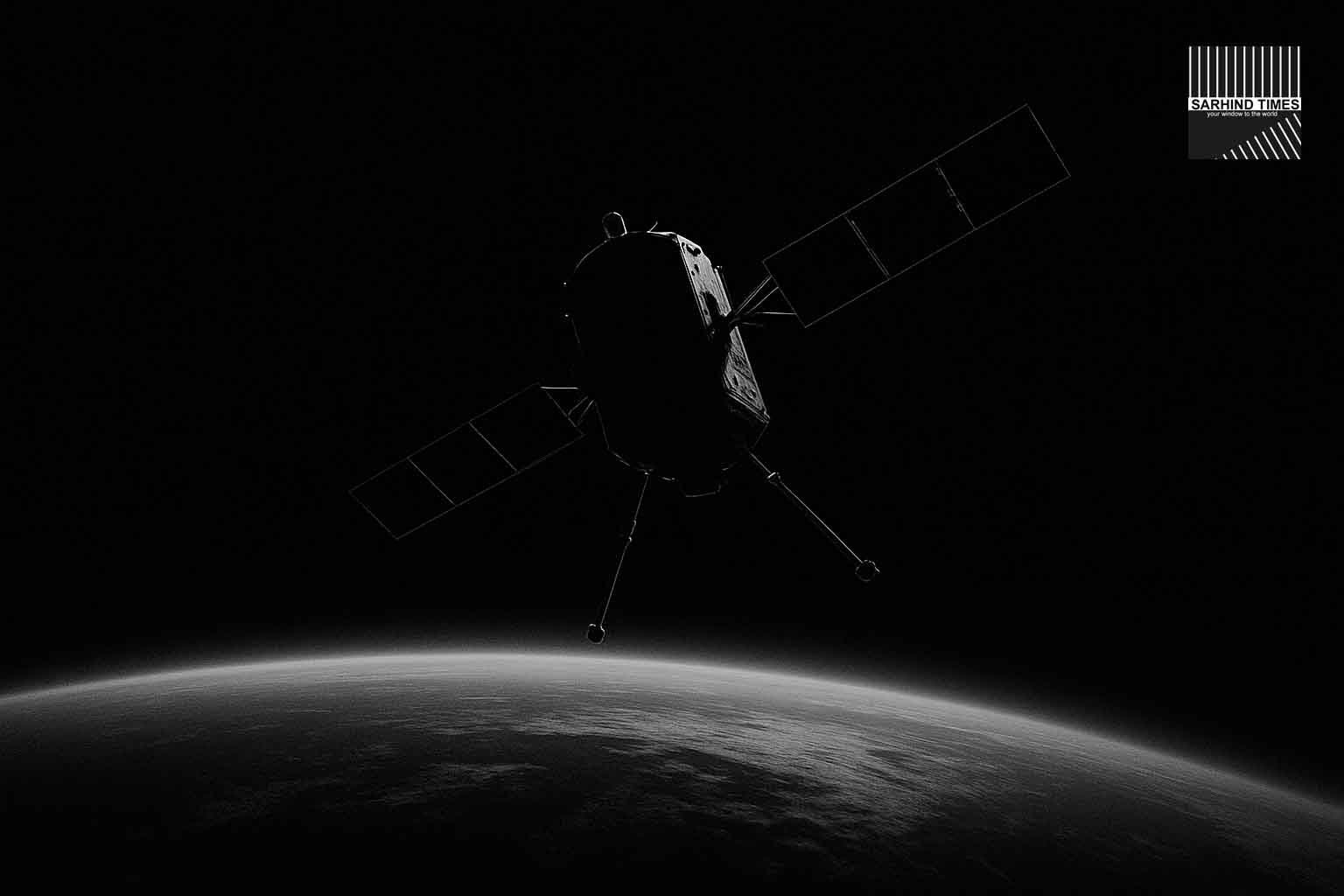By Sarhind Times Science Desk | Bengaluru / New Delhi — October 14, 2025
In a major stride for domestic astrophysics, the Indian Space Research Organisation (ISRO) on Monday formally opened its X-ray Polarimeter Satellite (XPoSat) to proposals from Indian scientists under its first Announcement of Opportunity (AO) cycle. The initiative invites institutions, universities, and researchers across India to propose observations using the satellite’s instruments, particularly the XSPECT payload, and marks an effort to democratise access to advanced space data.
The move was announced in conjunction with a National Meet in Bengaluru, during which ISRO released approximately 143 GB of archival datasets to the scientific community and made available proposal processing tools and visibility software.
As part of this first AO, 60% of the observation time of the XSPECT instrument (covering the energy range 0.8–15 keV) will be allocated to Indian guest observers for the period January–December 2026.
This opening is widely seen as a catalyst to deepen India’s capacity in X-ray astronomy, foster broader scientific collaboration, and strengthen the student and research pipeline for future space missions.
Background: What Is XPoSat and Why It Matters
The Mission in Brief
XPoSat is India’s dedicated space observatory for X-ray polarimetry, combining timing, spectroscopy, and polarization measurements into one platform. The satellite was launched on January 1, 2024, aboard PSLV-C58 from the Satish Dhawan Space Centre, Sriharikota.
XPoSat operates in a low Earth orbit of about 650 km altitude, with a modest inclination of 6°, making it near-equatorial in its orbital path. Its mission lifetime is planned for about five years.
The satellite carries two main scientific payloads:
- POLIX (Polarimeter Instrument in X-rays) — designed to measure the degree and angle of polarization of X-rays in the medium energy band (8–30 keV).
- XSPECT (X-ray Spectroscopy & Timing) — delivering spectroscopic and timing information across 0.8–15 keV.
While POLIX is central to the polarimetry mission, the first AO cycle currently solicits only XSPECT-based proposals.
Instrument Capabilities & Science Prospects
The XSPECT payload represents an important instrument innovation. According to a recent preprint, the instrument uses Swept Charge Devices (SCDs) for spectral sensitivity, along with a set of collimators, light-blocking filters, and signal processing electronics. It enables long-duration spectral studies of bright sources, including X-ray binaries, pulsars, and active galactic nuclei, bridging gaps in continuous exposure time.
Because XSPECT can operate over extended periods, it can track spectral changes over time, detect timing variations, and complement polarimetry data from POLIX. The joint capability is expected to help constrain models of emission mechanisms, magnetic field geometries, and plasma physics in extreme environments.
In effect, XPoSat is meant to be a proposal-driven observatory, akin to India’s AstroSat (which covers multi-wavelength astronomy). This ramps up India’s ability to use space telescopes collaboratively with the research community.
The Announcement of Opportunity: Process & Parameters
Who Can Apply
The AO calls for proposals from Indian scientists or researchers residing and working at institutions, universities, or colleges in India, with experience or interest in astronomy or space sciences. Applicants must be able to submit as Principal Investigators (PIs) justifying target selection scientifically and technically, and commit to analyzing data if their observations are approved.
Timing & Deadline
Proposals must be submitted through the XPoSat Proposal Processing System (XPPS) hosted via ISRO’s Indian Space Science Data Centre (ISSDC). The AO document is available publicly on ISRO’s website.
For this cycle, the deadline for submission is November 30, 2025.
Allocation & Peer Review
Selected proposals will be reviewed by a Time Allocation Committee (XTAC), which will judge them on scientific merit, feasibility, and alignment with mission constraints. Approved PIs are expected to receive a proprietary data period (e.g. six months) after observation, after which data goes into the public archive.
In the first cycle, 60% of available XSPECT observation time in 2026 is reserved for Indian guest observers. The rest presumably may be held for mission team priorities or internal programs.
Supporting Tools & Data Release
To facilitate proposal writing and observation planning, ISRO has released supporting tools, such as XPoViewer (visibility analysis) and associated documentation. The released archival data (about 143 GB) and relevant tools are now accessible via the ISSDC portal.
A national meet on XPoSat also served as a forum to appraise the mission’s early performance, showcase the payloads (POLIX, XSPECT), and engage researchers and students. Around 175 participants from academia, ISRO, and institutions attended.
Scientific & Strategic Implications
Democratizing Space-Based Astronomy
By opening the observatory to external users, ISRO cedes proprietary control and adopts a model seen in major space agencies worldwide (NASA, ESA). This approach:
- enables diversified science goals beyond the mission core team,
- builds capacity across academic institutions in India,
- encourages multi-institutional collaboration,
- accelerates the training of students in observational astrophysics, and
- strengthens India’s role in global space science.
Catalyzing Research in X-Ray Astrophysics
India has had limited presence in dedicated X-ray polarimetry so far. Missions like Chandra, XMM-Newton, and IXPE (by NASA) dominate the field externally. With XPoSat, India acquires a unique capability to address open questions around pulsars, magnetars, black hole binaries, supernova remnants, and other high-energy transients.
Because polarimetry reveals geometric and magnetic structure beyond what timing or spectroscopy alone can offer, combining all three observables (polarization, spectrum, and temporal variation) is expected to sharpen theoretical discrimination among competing models—for example, emission region geometry, magnetic field alignment, or scattering properties in extreme relativistic contexts.
Student Pipeline & Infrastructure Growth
One of ISRO’s stated goals is to engage students and the academic community more deeply in space science. The opening of XPoSat as a “guest observer” platform magnifies that impact: even smaller universities or departments can now propose observations.
As participants become familiar with data reduction, calibration, and scientific interpretation, a new generation of Indian astrophysicists can emerge, better prepared for future missions.
Future Missions & Technology Roadmaps
The success of XPoSat (scientific yield, community uptake, technological performance) will influence India’s roadmap in space astronomy. Demonstrating this kind of open observatory model can make the case for more advanced telescopes (X-ray, gamma, gravitational waves) with even greater sensitivity or capabilities. ISRO leaders have alluded to such ambitions in recent statements.
Challenges and Considerations
While the opening is a landmark, it also brings challenges:
- Technical readiness: Some institutions may not have prior experience in X-ray instrumentation or analysis pipelines. Ensuring the proposals are technically robust and executable is essential.
- Competition: Because resources are limited, many worthy proposals will inevitably be turned down, at least initially—making the review process demanding.
- Data calibration & pipeline support: The mission team must ensure robust calibration, software tools, and user support to help external users get usable science outputs.
- Balancing mission priorities: The core science goals of XPoSat must be protected; too many open proposals might dilute focus or strain operations.
- Expectation management: The community will expect high-impact results; early outputs must deliver rigorously to build trust in the system.

























+ There are no comments
Add yours